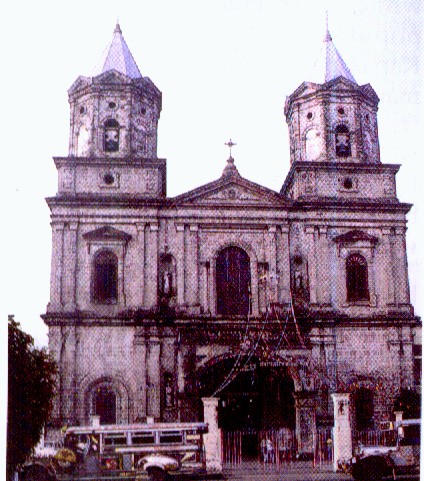 ANGELES CITY
Modern Angeles began in 1796 when Don Angel Panteleon de Miranda, a former gobernadorcillo (mayor) of San Fernando, and his wife, Dona Rosalia de Jesus, began clearing Kuliat,
then the northernmost barangay of San Fernando. On December 8, 1829 the barangay was inaugurated as a new town and given the beautiful name of "Angeles" in honor of Don Angel
and the Holy Guardian Angels (Los Santos Angeles Custodios), its titular patrons.
GEOGRAPHY
Angeles City is located just 80kms. north of Manila and 167 kms south of Baguio
and consists of 33 barangays. It sits 182.90 m above sea level, with the CSEZ and Mabalacat
to the north, Magalang to the northeast, Mexico to the east, San Fernando to the southeast,
Bacolor to the south and Porac to the west and southwest.
ARTS & CULTURE
Early exposure to the outside world, even before the Spanish colonial period, has contributed to the rich culture of the
Kapampangan people. In Angeles itself, one can find a large concentration of carpenters, woodcarvers,
metal craftsmen, tinsmiths and other artisans.
A visitor can also enjoy a night of Kapampangan poetry or Teatrong Kapampangan plays at Calle Lakandula,
a local hangout for poets, writers and artists.
HOLY ROSARY PARISH CHURCH
the church of the mother parish of all Angeles parishes, is located at the intersection of Sto. Rosario and Sto. Entierro Streets. The church was constructed from 1877 to 1896 by the townspeople of Angeles, including the landed families, and above all, the small farmers and tenants, without whose patient labors the edifice would not have become a reality. From 1899 to 1900 the U.S. Army used the church as a military hospital.
SITES & ATTRACTIONS
Steeped in history and blessed with natural and man-made scenery, Angeles offers several sight-seeing options for visitors. One can trace the steps of history along its main road and visit its historical landmarks. Angeles is also famous for its beautiful and friendly people, food and entertainment.
Visiting gourmets who drive through the city can sample all sorts of rice cakes, sweets, snacks and various delicacies.
Many of the historical spots in Angeles and Clark have become veritable tourist spots and sentimental destinations of annual pilgrimages undertaken by Filipino, American and Japanese World War II veterans and their families and relatives.
1. JAPANESE CAVE
Located at the back of Lily Hill Plaza sits a historical marker fronting the entrance to the cave memorializing the spot where Japanese soldiers lost their lives in a gallant last stand against American and Filipino forces during World War II.
2. CLARK MUSEUM and MUSEO NING KAPAMPANGAN
3. FORT STOTSENBERG GATE POSTS
were built by the Americans and later used by the Japanese as fill for the runway during WWII. These are now located at the former 13th Air Force parade grounds.
4. NEPOMUCENO ANCESTRAL HOUSE
Located along Sto. Rosario Street was the home of Don Ciriaco de Miranda, Angeles' first gobernadorcillo (mayor). Built in 1840, it was inherited in 1868 by Don Ciriaco's niece, Dona Agustina Henson de Nepomuceno. The ground floor of this, the second oldest structure in Angeles, is curently occupied by commercial entities; the rest of the house is closed to the public.
5. CAMALIG
A restored grain storehouse, is nestled between the two oldest houses in Angeles along Sto. Rosario Street. Built in 1840 by Don Ciriaco, it was restored in 1980 by the late Mr. Armando L. Nepomuceno. Camalig is now the home of Armando's Pizza.
6. 13TH AIR FORCE BUILDING
This was the headquarters of the U.S. 13th Air Force.
7. CLARK CEMETERY
is hallowed ground where the remains of close to 8,000 U.S. military and civilian personnel who died during the Spanish-American War are interred.
You can reach us at:
Dream Treks.com Adventures
Phone: 0917-433-5526 or 0917-609-2907
Or send us e-mail at: dreamtreks@go.com |




